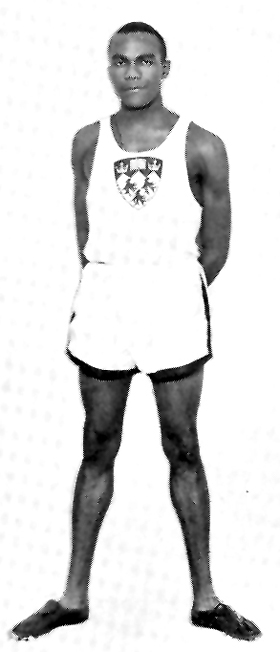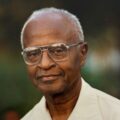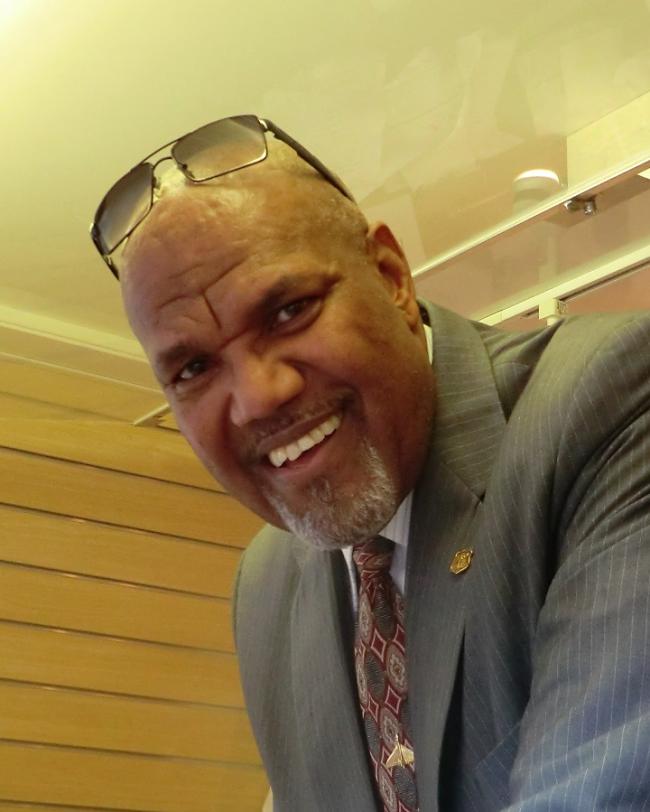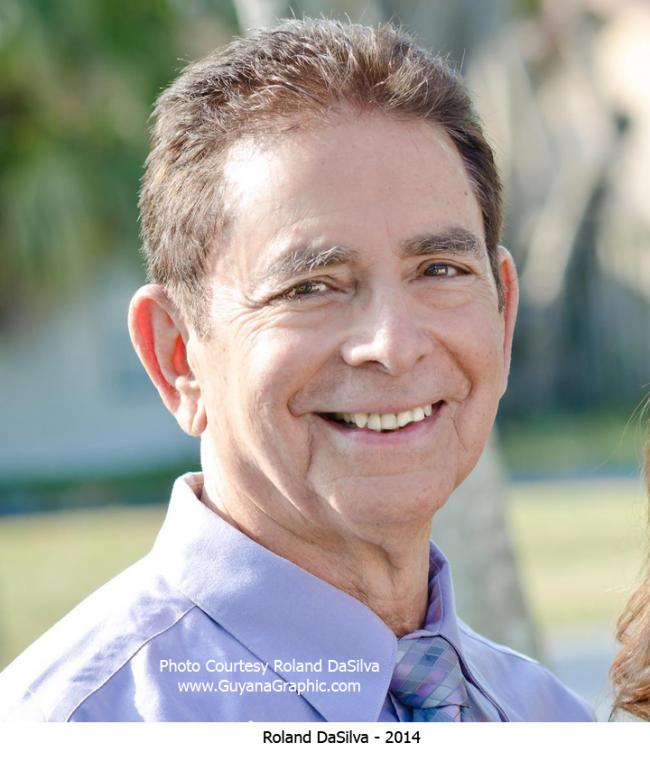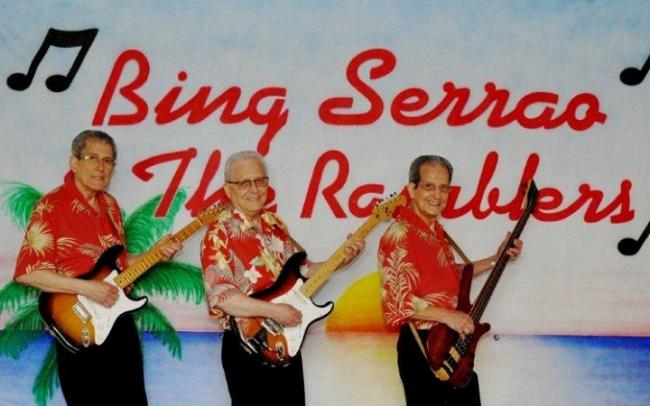Dr. Phil Edwards – Phil Edwards was inducted to the McGill Sports Hall of Fame in 1997. Philip Aron Edwards, was born on Sept. 13, 1907 at Georgetown, British Guiana. He graduated from McGill medical school in 1936, and received a graduate diploma in medicine in 1945, specializing in tropical diseases.
He was the first black athlete from McGill to compete in the Olympics and the first Canadian Olympian to win five Olympic medals, racking up five bronzes over three Olympiads — in 1928 at Amsterdam Games, 1932 at Los Angeles and 1936 in Berlin.
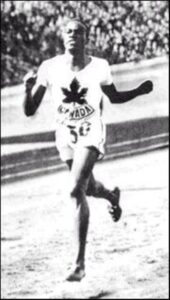
In Amsterdam he won bronze in the 4x400m relay and finished fourth in 800m. At Los Angeles he captured three bronze medals (800m, 1500m and 4x400m).
At Berlin he won bronze in the 800m, placed fourth in 4x400m relay and was fifth in 1500m. In 1936, Edwards became the first winner of the Lou Marsh trophy, as Canada’s best athlete.
He was consistently McGill top scorer in track & field and led the Redmen to six consecutive championships, captaining the team in each of his last five seasons (1931-36).
Edwards was also Canadian intercollegiate track champion in various events numerous times and established many McGill, Canadian and American track records.
The only four-time winner of 600-yard race at American indoor track nationals (1928-31) he held 13 national bests, seven second-best performances and five third bests from 1927 to 1936.
He competed for British Guiana at British Empire Games (1930-34) and won gold in half mile at 1934 Games in London.
Edwards was a member of Martlet Society and a McGill fraternity. He also served as a captain with the Canadian army in World War II.
He died in Montreal on Sept. 6, 1971 and shortly afterwards, the “Phil Edwards Memorial Trophy”, was established to be presented annually to Canada’s most outstanding track athlete. He was also inducted into the Canadian Sports Hall of Fame in 1997.
Phil Edwards: The Man of Bronze
The unknown hero. Phil Edwards has won more medals than any other Canadian Olympian.
Winner of five bronze medals, Phil Edwards is Canada’s most decorated Olympian. He is also one of the least known. Christened the “man of bronze”, Edwards represented Canada at three Olympics, including the notorious 1936 Berlin Olympics in Nazi Germany.
Edwards was born in 1907 in Georgetown, British Guyana, the son of a wealthy magistrate. Edwards’ father saw his child’s promise as a runner and became his first coach.
“Grandad would take him to Georgetown and just take him for runs all the time. And I guess saw his potential and just had him running and he would run with him,” says Edwards’ daughter Gwen Emery.
But British Guyana held limited opportunities for athletes. To pursue his running career, Edwards moved to the United States.
In 1926, Edwards enrolled in New York University and joined the track team as a middle-distance runner. Immediately he began smashing intercollegiate records with times fast enough to qualify for the 1928 Olympics.
But there was a problem. As a British subject, Edwards could not compete for the United States and British Guyana didn’t have an Olympic team. Edwards’ solution? Go North!
In 1927, Canadian Bobby Robinson, the founder of the Commonwealth Games, approached Edwards and invited him to join the Canadian team that was going to the 1928 Olympics in Amsterdam. In the end it was Canada, not the United States like his father thought, that would give Edwards a chance to fulfill his Olympic dream.
Edwards hoisting the victorious Percy Williams at the 1928 Olympics in Amsterdam. The 1928 games in were a triumph for Canada in track and field. The women’s team won two gold, a silver and a bronze. Percy Williams won gold in the 100 and 200 meters. Edwards won a bronze as a member of the 4×400 relay team.
After Amsterdam, Edwards reached a crossroads. He’d graduated from New York University, and wanted to study medicine. But he also wanted to keep running. He decided to enroll at McGill University in Montreal, which had a top-notch medical school and track program.
At McGill Edwards met Jim Worrall, a strapping 6’5 hurdler.
“Phil was the backbone of the McGill team. Phil was an outstanding human being. I would like to describe him as a gentleman and a gentle man. He was not overly modest. But he didn’t push himself forward. He was a team player,” say Worrell.
Ab Conway was a runner at the University of Toronto who often competed against McGill. He saw first-hand Edwards’ team-first mentality.
“He was always unbeatable in the intercollegiate, and usually tried to bring another McGill man along with him. He would ultimately fall back and let the other McGill man win,” remembers Conway.
Edwards was a member of the Canadian team that went to Los Angeles for the 1932 Summer Olympics. He participated in three events—the 800 meter, the 1500 meter and 4×400 relay. He won a bronze in each.
Ray Lewis was Edwards teammate on Canada’s relay foursome. He studied Edwards’ style a noticed a pattern. “Nobody else was in the race when the gun went off. Phil went out on his own pace, which was fast.”
Olympic teammate Ray Lewis noticed that Edwards was a “bit of a loner”, who “stayed fairly well to himself.” But to according Lewis, after setting the pace early, Edwards would tire and fail down the stretch. Despite his trouble finishing races, Edwards came home from Los Angeles with three bronze medals. Canada won 15 in total.
Edwards had won four bronze over two Olympic Games. Yet his most memorable race was to come four years later.
On July 1936, the steamship Duchess of Bedford set sail from Montreal on route to the Summer Games in Berlin. On board, in their smart new uniforms, was Canada’s Olympic team. Worrall had made the track team as a hurdler. He and his teammates chose Phil Edwards as their captain.
“He just exuded confidence and calmness and you sort of got into that feeling,” says Worrall.
Conway was also a member of that 1936 team. “It was just the way he spoke and the way he conducted himself and on the standards that we’d been taught in those days, he just seemed to exemplify them,” says Conway.
When the athletes arrived in Berlin, they found a city filled with excitement and tension. The drumbeat of war was still distant, but the dark Nazi ideology was well known. It forced many countries, including Canada, into a difficult choice: how to acknowledge Adolph Hitler during the opening ceremonies.
The track and field team, Phil Edwards, and the rest of Canada’s Olympic team decided to give Hitler the Olympic salute.
“Were (we) going to salute in the sort of army method, or we were going to give the Olympic salute? Not the Nazi salute, the Olympic salute. But the Nazis had taken it over. We decided that we were not going to let them do it, that the Olympic salute was the Olympic salute and we were going to give the Olympic salute,” explains Conway.
Worrall carried the flag as the Canadian team entered the stadium. As they raised their arms, the crowd erupted into cheers, thinking the Canadians were giving the Nazi salute.
“We took a lot of backlash criticism for that. But it was done, I think, well you might say, the kindest thing you might say is it was done in naivety,” says Worrall.
The salutes gave Hitler a propaganda victory, but he wanted more. He planned to use the entire Games to promote the Nazi credo of a white master race. The plan fell apart, largely because of American track star Jesse Owens, who won four gold medals. But there were other black athletes who shone in Berlin. One of them was Edwards, who with John Woodruff of the United States staged one of the most dramatic duels of the Games in the 800 meter final.
Edward (74) finishes third in the 800 hundred meter, at the 1936 Olympics in Berlin, behind the winner John Woodruff (745).When the gun fired to begin the race, Edwards, like usual, exploded off the start, taking the lead and setting a brisk pace.
Edwards fell out of the clear lead and into a battle with Woodruff.
“Woodruff was a huge man and he had a tremendous stride. It was interesting that he passed Phil, and then Phil passed him. And then down the backstretch on the second lap, it was rather amusing to watch, because all of a sudden these two bodies started to merge, and you could see one body but four legs. Woodruff eventually pulled ahead and Phil unfortunately couldn’t quite hold onto second spot,” remembers Worrall.
It was the same old story for Edwards: fast start, weak finishing kick, and a bronze medal.
“That was his style of running. It was certainly effective in getting him almost to the gold, not quite, but almost to the gold,” says Worrall.
On their way home from Berlin, the Canadian team stopped in London, England. When they arrived at their hotel, patrons began raising a fuss because they were uncomfortable with the though of staying in the same hotel as a black man.
The officials, with full team backing decided not to stay at that hotel as a team. The incident revealed the deep affection that the team had Edwards.
Conway tells the story: “The officials, with full team backing decided not to stay at that hotel as a team. I think probably the best quote came from Cathleen Hughes-Hallett, a girl fencer. When this little episode happened at the hotel she said, ‘if this hotel is too good for Phil Edwards, it’s too good for me.'”
The Berlin Games in 1936 were Edwards’ third and last Olympics. That same year he was named the first-ever winner of the Lou Marsh award as Canada’s outstanding athlete.
Dr. Phil Edwards was an expert in tropical diseases. With his running career over, Edwards joined the staff of the Royal Victoria Hospital in Montreal, and became an expert in tropical diseases. He put that expertise to use on a number of international medical missions.
In early 1971, Edwards fell ill with heart problems. He died that September at the age of 64.
“I think we lost a very fine individual. A fine person. A very good man, a good Canadian, a good doctor, and in my estimation a sports hero,” says Worrall.
Edwards’ five Olympic medals still stand as the highest total ever won by an individual Canadian. But it wasn’t until 1997 that he was elected to Canada’s Sports Hall of Fame, and only after a vigorous campaign led by Worrall.
Lewis, Edwards’ Olympic teammate, thinks it’s foolish to measure an athlete solely by the number of gold medals they have hanging around their neck. According to Lewis, it is the competitive spirit that is the mark of a true Olympic champion.
“He was one of the greatest that ever ran for Canada. To make three Olympics, ’28, ’32 and ’36. And bring home five bronze medals. Forget about going for the gold, but he was competing. And anytime anybody competes that successfully for 8 years, ’28 to ’36, you’ve got to be good.”
From McGill University web site

